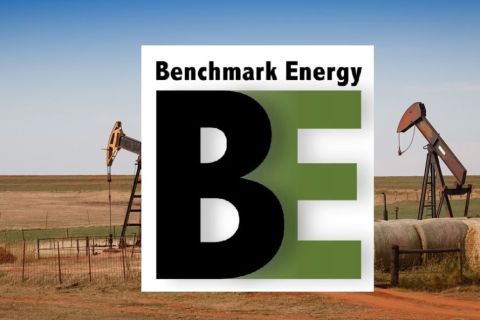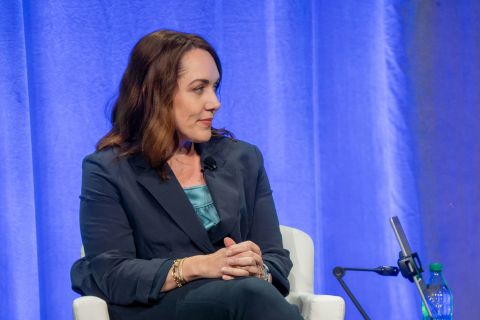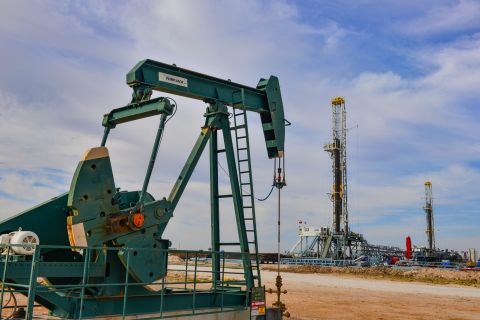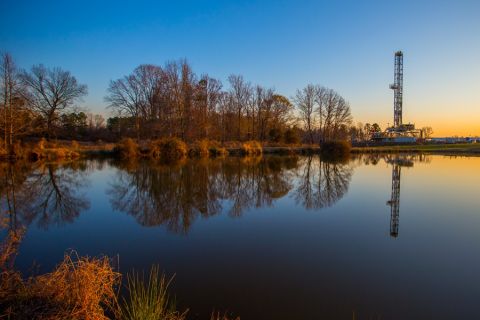Independent oil and gas producers searched for North American natural gas at a frenzied pace in 2000, and domestically focused drilling contractors reaped the rewards, Petroleum Finance Week's scoreboard shows. "The domestic drillers did much better than international drillers, onshore and offshore," says Matthew Conlan, who covers drilling contractors for ING Barings in Houston. "Where utilization and dayrates recovered the fastest was in North America, spurred on by natural gas drilling. And they're rising primarily from the spending of the independent producers rather than the international major oil companies. Since the public land drilling companies are almost exclusively North American-based, that's why as a group they performed so well." Onshore drilling contractors were the biggest beneficiaries; their operating income skyrocketed 1,021% from 1999 on revenues that were 92% higher. Onshore-offshore hybrid drillers' operating income jumped 62% and their revenues grew 37% year-over-year. Offshore drillers' total operating income rose 80% as their revenues grew 35% from 1999. UTI Energy Corp. saw the biggest boost among the land group. Its operating income skyrocketed from $556,000 in 1999 to $27.3 million in 2000. More than half of that-$15.3 million-came in the fourth quarter. "The record results achieved during the quarter reflect the significantly increased demand for land-based drilling rigs, together with the additional capacity that we have added during the past few years," says UTI chairman Mark S. Siegel. The Houston-based onshore drilling contractor acquired six rigs in 2000 and is preparing eight more to return to service. Other land drillers benefited from fleet expansions as well. Patterson Energy Inc., which is in the midst of a merger with UTI, added 12 rigs in two separate transactions last year, and this year, it has acquired 21 additional rigs. "The expanded drilling fleet provides Patterson with greater opportunity and flexibility to take advantage of the favorable commodity prices and resulting increased demand for contract-drilling services," says Patterson chairman Cloyce A. Talbott. The company is refurbishing its nonoperable rigs and expects to redeploy an additional six rigs by the end of this quarter and another five by year-end. Building more land rigs Looking ahead, analysts say approximately 150 land rigs will be added to the overall fleet in 2001 due to reactivation, but Conlan warns there are not enough newbuild projects right now to replace aging rigs. "[The additions are] very insignificant relative to the total fleet of rigs that needs to be replaced during the next decade," he says. "We need more gas production than we are able to drill right now. I think one of the major challenges that will face the drilling industry is trying to supply as many rigs as customers are going to be demanding. I don't think they exist, which means they're going to have to be built." Mark Urness, who covers drilling contractors for Salomon Smith Barney in New York, says Helmerich & Payne Inc. is the most active builder right now, with 27 land rigs under construction. More drilling contractors may soon follow H&P's example. Dayrates, from $15,000 to $20,000, are at or above levels necessary to justify replacement, and contractors are signing two- to five-year contracts. "The investment requirement to refurbish and reactivate a land rig ranges from $1- to $5 million," Urness says. "However, we believe contractors will seriously begin to consider new construction as the investment requirements reach the $4- to $5-million level." Offshore rig newbuilds The natural gas frenzy has helped contractors that are leveraged toward the Gulf of Mexico jackup market. Ensco International Inc. had the biggest leap in operational income among the marine drillers-3,648%, from $3.5 million in 1999 to $131.2 million in 2000. "The improvement in our full-year 2000 results was driven primarily by increased activity and higher dayrates for our Gulf of Mexico jackup rigs in response to the tight gas market," says Carl Thorne, chairman of the Houston-based offshore drilling firm. "During 2001, we expect the Gulf of Mexico will remain strong, and the recovery in international markets will gather momentum." At Noble Drilling Corp. , chairman James C. Day says utilization of the company's domestic jackup and semisubmersible rigs increased to 100% in the fourth quarter of 2000, from 71% in the fourth quarter of 1999. The average dayrate nearly doubled to $41,300, from $22,200 during the fourth quarter of 1999. Again, there are few newbuild programs currently under way. "There are maybe 10 jackups on the drawing board, and they're scheduled for delivery between 2002 and 2005," Conlan says. "That is 10 jackups to a fleet of 400. That's really not that significant yet." He expects more newbuild programs to take off within the next two years. On the deepwater side, "drillers have not yet gotten the bang that the jackup drillers have gotten, but I fully expect rates to go back to where they were previously," says Lewis Kreps, who covers drilling contractors for Frost Securities in Dallas. In particular, the midwater area in which second-generation semisubmersibles work lagged in 2000, he adds. "The fourth-generation and drillship area is pretty much booked. Since most of those rigs are working on exploration projects, I would expect as we move through 2001 and into 2002-after all those rigs have been drilling-we're going to have some development projects that will stretch out three to five years where they'll need more and more rigs." Spec newbuilds Global Marine Inc. spent a great deal of money in 2000 on newbuild drillship projects. Last year, capital spending totaled $178 million and was dominated by final construction and commissioning costs of two new drillships. "With these projects completed, our anticipated capital requirements for 2001 will be reduced by almost 50%," Global Marine chairman and president Bob Rose says. Future newbuilds will not be constructed without adequate contractual support, he adds. "Global Marine will not build new rigs on a speculative basis. If and when the market demands new rigs, term contracts will be available to support construction." Though many contractors want firm contracts before they begin building deepwater rigs, Kreps says planning and engineering should begin much earlier. "I think the industry learned a lot through the last building phase in 1996-98. With these rigs it's better to do preengineering and pin down your costs than to sign a contract and let things get out of control, which a lot of companies did. "Some of the most successful companies did one to two years of preengineering before they signed any contracts, and those are the companies that came in on time and on budget." Noble Drilling is presently engineering the conversion of two idle semisubmersibles, the Noble Dave Beard and Noble Clyde Boudreaux, for ultradeepwater work (up to 10,000 feet), in preparation for possible future contracts, according to Day. "Obviously these conversions will not occur without a commitment from a client," he adds. "The conversions would take approximately 20 months and would be much more cost-effective than newbuilds." International markets Analysts and contract drillers anticipate the resurgence of the international market as the majors loosen their purse strings. "2001 will be for international drillers sort of like 2000 was for domestic drillers-the market is tightening up and we're going to see the beginning of dayrate improvement which will then carry over with positive momentum into next year," says Conlan. Transocean Sedco Forex Inc. president J. Michael Talbert expects higher spending to be evident in international offshore markets. "Recent discussions with customers have resulted in firm contracts, contract extensions or letters of intent which are expected to become firm contracts on several rigs in our fleet." Those contract developments, which are estimated to be worth $67 million combined, involve the jackup rigs Transocean Nordic and Trident 15, in Norway and Thailand, respectively, the semisubmersible Sovereign Explorer in the U.K. and the semisubmersibles Transocean Amirante and Transocean Richardson in the U.S. Gulf of Mexico. Sted Garber, president and chief executive officer of internationally focused Santa Fe International Corp. , Dallas, says the offshore-onshore drilling firm is seeing an upturn. "We anticipate that international spending will show a marked increase in 2001, which will accelerate the upturn in our markets," Garber says. "We are encouraged that the anticipated increase is based on customers moving forward with projects which are economic at significantly lower oil prices. This approach is likely to result in a longer cycle which will benefit the industry as a whole." During the next few quarters, Nabors Industries Inc. has new contracts for five rigs that will commence in Algeria, along with anticipated higher activity in the Middle East and Latin America, says chairman Gene Isenberg. Use of wealth Overall for 2001, Conlan recommends domestic drillers, especially Patterson-UTI , Grey Wolf Inc. , Nabors and Unit Corp. among land drillers and Ensco , Global Marine , Noble Drilling and Marine Drilling Companies Inc. among offshore drillers. Transocean Sedco Forex , with the most extensive deepwater drilling fleet in the world, is especially poised to benefit from the coming resurgence in international deepwater drilling, he adds. "Even through some companies did better than others in 2000, they will all do significantly better in 2001," he says. "The trend is up and should continue up through the rest of the year." Kreps says the trend to watch in 2001 is how the drillers use their newfound wealth. "All of the companies are flush with cash and have very good balance sheets. I guess what we ought to be looking at in 2001 is how the drillers spend their money-whether that's going to be building new rigs, whether that's taking out competitors or whether they're going to be paying off their debt or buying back shares. 2001 is going to be an interesting time because of all the money that's showing up on everybody's income statement."
Recommended Reading
EIA: Permian, Bakken Associated Gas Growth Pressures NatGas Producers
2024-04-18 - Near-record associated gas volumes from U.S. oil basins continue to put pressure on dry gas producers, which are curtailing output and cutting rigs.
Benchmark Closes Anadarko Deal, Hunts for More M&A
2024-04-17 - Benchmark Energy II closed a $145 million acquisition of western Anadarko Basin assets—and the company is hunting for more low-decline, mature assets to acquire.
‘Monster’ Gas: Aethon’s 16,000-foot Dive in Haynesville West
2024-04-09 - Aethon Energy’s COO described challenges in the far western Haynesville stepout, while other operators opened their books on the latest in the legacy Haynesville at Hart Energy’s DUG GAS+ Conference and Expo in Shreveport, Louisiana.
Mighty Midland Still Beckons Dealmakers
2024-04-05 - The Midland Basin is the center of U.S. oil drilling activity. But only those with the biggest balance sheets can afford to buy in the basin's core, following a historic consolidation trend.
Mesa III Reloads in Haynesville with Mineral, Royalty Acquisition
2024-04-03 - After Mesa II sold its Haynesville Shale portfolio to Franco-Nevada for $125 million late last year, Mesa Royalties III is jumping back into Louisiana and East Texas, as well as the Permian Basin.





